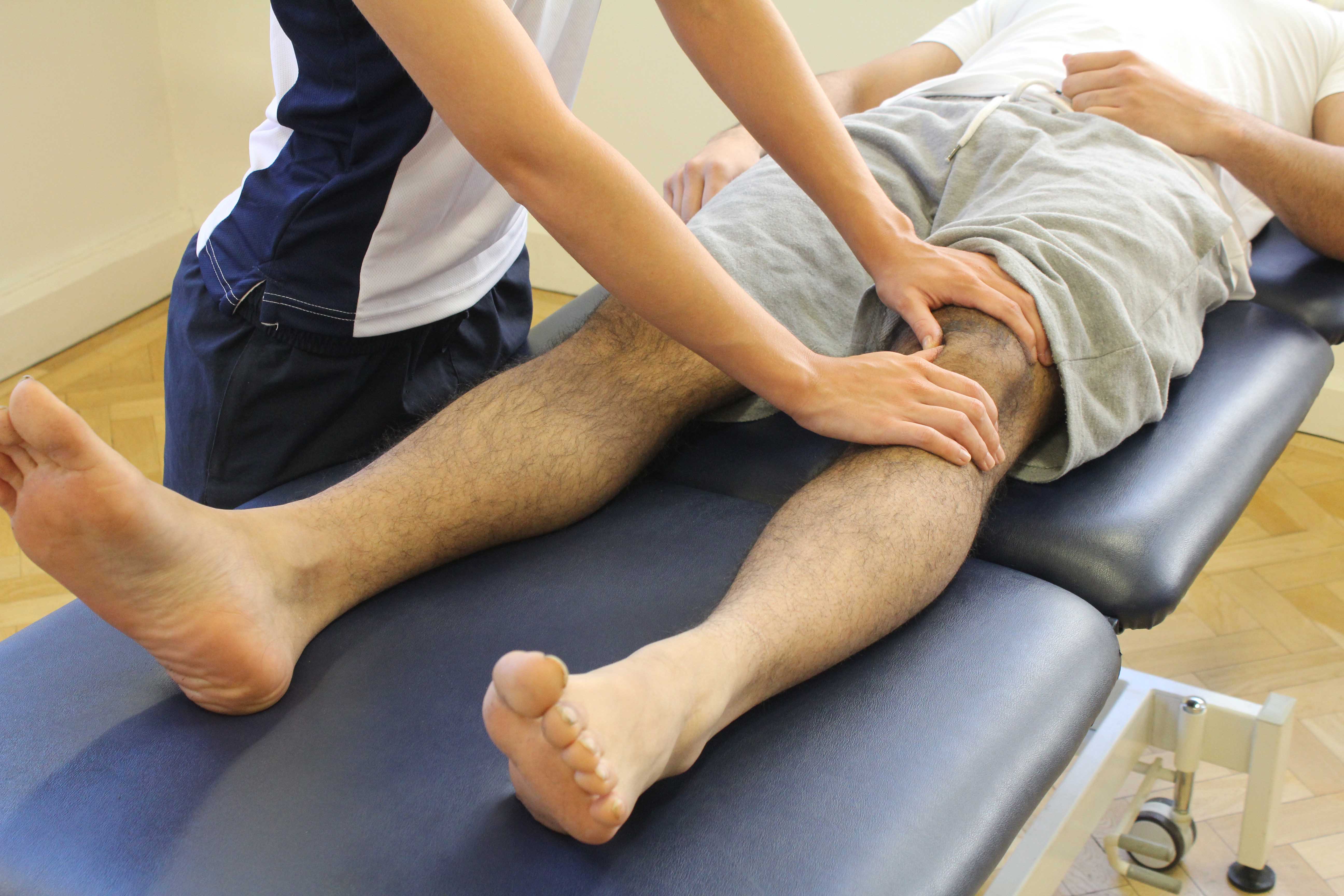What is Sinding-Larsen Johansson syndrome?
Sinding-Larsen Johansson disease refers to an injury to the bone growth plate at the bottom of the kneecap. Physiotherapy can successfully treat Sinding-Larsen Johnansson syndrome.
How does Sinding-Larsen Johansson syndrome happen?
The quadriceps muscles on the front of the thigh attach to the kneecap which, in turn, is attached to the upper shin bone via a tough band of tissue called the patellar tendon. In children, the small part of the kneecap from which the patellar tendon originates is separated from the majority of the kneecap by a growth plate. This growth plate is where bone growth occurs and, as a result, is a weak point in the bone. Repeated contraction of the thigh muscle, such as running and jumping, during a period of growth can injure the growth plate.
What are the symptoms of Sinding-Larsen Johansson syndrome?
Sinding-Larsen Johansson syndrome presents as pain at the bottom of the kneecap in younger athletes. The pain is usually worsened by activity or exercise. The bottom of the kneecap may also be tender to touch and swollen. Other symptoms include:
 Above: Patella mobilisations ans stretches to relieve pain and stiffness
Above: Patella mobilisations ans stretches to relieve pain and stiffnessWhat should I do if my child has Sinding-Larsen Johansson syndrome?
If you suspect that your child has Sinding-Larsen Johansson syndrome you should arrange a physiotherapy appointment as soon as possible. In the meantime, you should limit their participation in sports. You can also apply ice to reduce any pain and swelling. Ice should be applied to the bottom of the kneecap using a bag of frozen peas or crushed ice wrapped in a damp towel.
What shouldn’t I do if my child has Sinding-Larsen Johansson syndrome?
If you think your child has Sinding-Larsen Johansson syndrome you shouldn’t encourage them to play through the pain. This may make their injury worse prolonging their recovery.
Physiotherapy for Sinding-Larsen Johansson syndrome.
Your physiotherapist will be able provide your child’s problem with a diagnosis at the initial assessment. Following the assessment, they will devise an appropriate treatment plan. Treatment may involve:
Could there be any long-term effects from Sinding-Larsen Johansson syndrome?
Sinding-Larsen Johansson syndrome does not produce any long-term effects. Like Osgood-Schlatter’s disease, it is a condition that settles when growth ceases. Therefore, it may take anywhere from two months to two years to resolve. Sinding-Larsen Johansson syndrome will not interfere with your child’s growth.
To book a physiotherapy appointment, please call Physio.co.uk on 0330 088 7800 or book online today.

 0330 088 7800
0330 088 7800


































